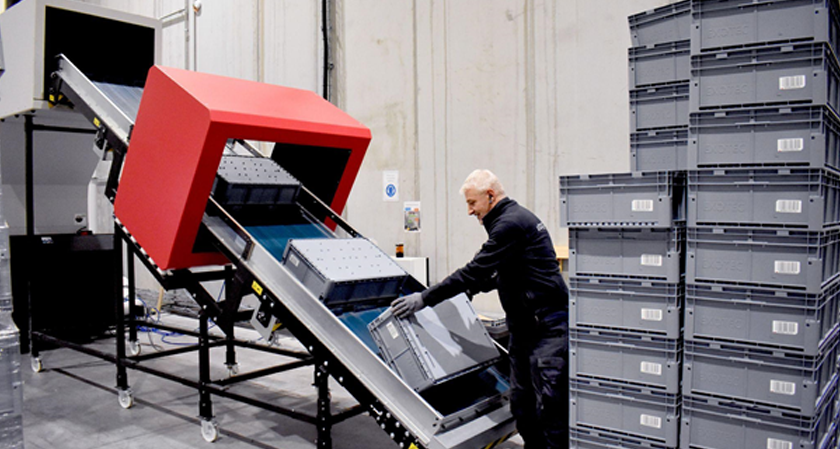>>
Industry>>
Supply chain management>>
How Reusable Containers Suppor...How Reusable Containers Support Stable Supply Chains During Market Fluctuations
The Silicon Review
21 November, 2025
The global supply chains are in constant motion, balancing production schedules, inventory requirements, and transportation logistics at all times. However, when markets become unpredictable, e.g., when there is economic depression, political changes, or natural calamities, then this equilibrium might be easily broken.
Reusable containers, designed with respect to durability, uniformity, and sustainability by experienced suppliers of plastic containers, are important in ensuring goods in transit remain in motion even when external factors become unpredictable.
When Markets Become Unpredictable, Packaging Reliability Becomes Critical
Reusable containers are able to eliminate most of these uncertainties. Businesses are able to hold stock of packaging without the fear of being caught up or having to experience delays in the supplies of new materials.
Key advantages include:
- Quality consistency: Reusable containers are consistent over time and minimize damage and losses.
- Assurance of availability: They do away with reliance on changes in the availability of raw materials.
- Operational stability: Standardization of packaging provides consistent management and transportation by the logistics partners.
- Consistent performance: Smaller fluctuations in the process of goods delivery and decreased downtime.
The impact of this reliability is felt in the entire manufacturing supply chain. When the packaging is stable, the handling times are reduced, the error rates are minimized, and the loads when transporting the goods are better predicted.
Reusable Containers as a Tool for Predictable Logistics
Efficient logistics is based on predictability. Reusable containers provide a scarcity of stability in a system that is put under strain by the ever-changing demand and unreliable shipping schedules. The design of uniforms enables their stacking with a high level of accuracy, the efficient use of trucks and pallets, as well as the minimization of loading and unloading time.
The reusable containers facilitate predictability of logistics by:
- Dimensions that are standardized in order to integrate with the pallets, racks, and automation systems.
- RFID, QR code, or barcoding traceability, which provides real-time traceability during transit.
- The greater efficiency in transport, maximum load space, and minimum empty returns.
- Interoperability with automation, such that robotics and conveyor systems operate successfully.
Companies such as Utz Group have shown how the reusable container systems can introduce sanity and predictability to complicated logistics networks in industries where precision and timing are essential factors (automotive, electronics, or food processing) or where high-volume batch processing is essential (e.g., the automotive industry).
Stabilizing Inventory Flows Across Different Demand Cycles
Reusable systems are in circulation, unlike single-use packaging, which requires waste production and replacement after each delivery because of the long-term plans and operational stability.
They assist in stabilizing the inventory flows by:
- Lessening the reliance on fresh packaging when there is high demand.
- Giving the option of rapid redeployment of containers when there are spikes in volume.
- Reducing non-productive inventory, as the containers can be stored compactly or be utilised in other areas whenever there is a slow cycle.
- Allowing a delivery on demand while maintaining the coordination of the flow between the suppliers and the manufacturers.
Lean manufacturing is also based on this cyclic benefit. Parts and products come in the quantity, time, and conditions needed- the key issues in achieving a balance when the demand is changing.

Cost Control When Markets Shift
88% of companies say that sustainability strategies create long-term value. Reusable containers would mean a higher cost initially, but, in the long term, they will offer controlled costs.
Some of how reusable containers can be used to maintain cost stability include:
- Reduced the long-term cost of every shipment by the use of repetition.
- Lower cost of waste management, as it is not always necessary to dispose of it.
- Less breakage of goods results in a reduction in returns and replacements.
- More effective use of labor, since packaging is less bulky to work with and store.
- Insurance against fluctuation in prices of raw materials, as there are not as many new materials needed.
When there is uncertainty in the market, there is the security of financial planning due to predictable costs. A company that uses a pool of reusable containers will be aware of its capacity in packaging and maintenance, and this will protect it against the point of unexpected material shortages or even supply-chain failures.
Sustainability as an Operational Risk-Reduction Strategy
Sustainability becomes more than a moral necessity; now it is a risk-mitigating tactic. Environmental regulations are becoming tighter, consumer demands are changing, and investors are putting growing consideration on how business organizations perform in the long term regarding environmental factors.
Reusable containers will assist in sustainability because:
- Conserving waste by reusing regularly instead of discarding.
- Reducing the amount of carbon, since fewer raw materials and production cycles will be required.
- Reduction of landfill dependence, reduction of environmental long-term liability.
- Improving brand image, satisfying customer and regulatory demand in eco-friendly behaviors.
The consumption of single-use materials decreases the carbon footprint of companies, minimizes landfill waste, and decreases their reliance on unstable supply chains of raw materials that are prone to market fluctuations. All these make the packaging strategy stronger and more progressive.
Conclusion
Global supply chains need stability in a time when there appears to be no certainty. The reusable containers provide this stability by integrating durability, standardization, traceability, as well as sustainability in one packaging strategy. They minimize the risks of fluctuating material prices, unpredictable demand patterns, and changing environmental policies.
Reusable containers are not only an option for packaging, but also an element of stability of the supply chain in a volatile world.


_2025-11-17_06-38-14.webp)

 (1)_2025-10-21_13-35-14.webp)

_2025-10-02_10-21-48.webp)